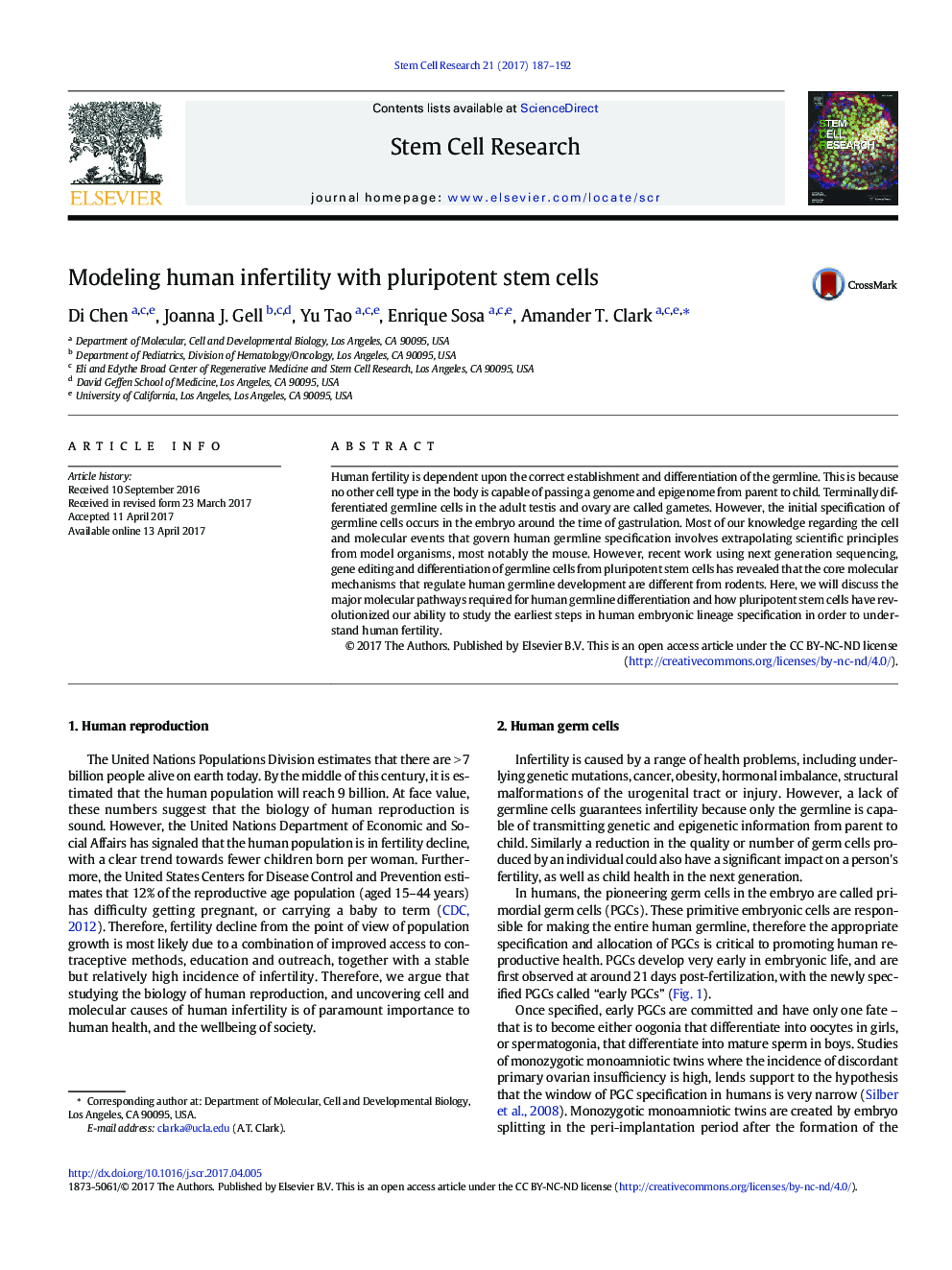| کد مقاله | کد نشریه | سال انتشار | مقاله انگلیسی | نسخه تمام متن |
|---|---|---|---|---|
| 5522676 | 1546032 | 2017 | 6 صفحه PDF | دانلود رایگان |
- Human PGC differentiation is distinct from rodents.
- Human PGC differentiation in the embryo can be described as early, late and advanced.
- Differentiation of PGCLCs from pluripotent stem cells creates early PGCs.
Human fertility is dependent upon the correct establishment and differentiation of the germline. This is because no other cell type in the body is capable of passing a genome and epigenome from parent to child. Terminally differentiated germline cells in the adult testis and ovary are called gametes. However, the initial specification of germline cells occurs in the embryo around the time of gastrulation. Most of our knowledge regarding the cell and molecular events that govern human germline specification involves extrapolating scientific principles from model organisms, most notably the mouse. However, recent work using next generation sequencing, gene editing and differentiation of germline cells from pluripotent stem cells has revealed that the core molecular mechanisms that regulate human germline development are different from rodents. Here, we will discuss the major molecular pathways required for human germline differentiation and how pluripotent stem cells have revolutionized our ability to study the earliest steps in human embryonic lineage specification in order to understand human fertility.
Journal: Stem Cell Research - Volume 21, May 2017, Pages 187-192
